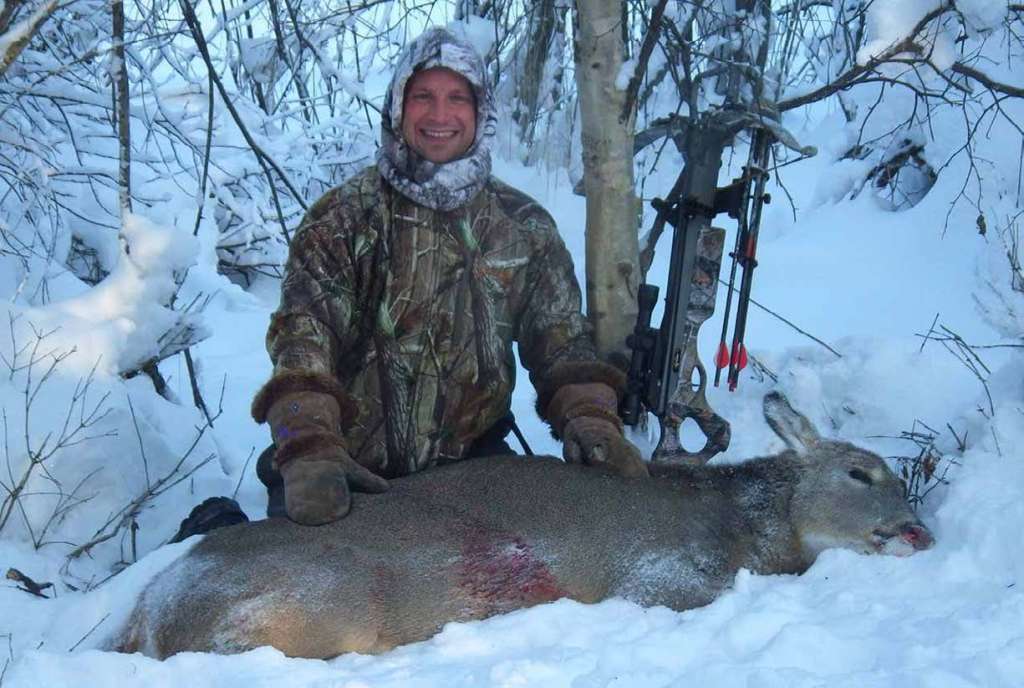Be Ready to Fling an Arrow When the Mercury Drops
My toes were like five icicles in each boot, completely frozen and stiff. Finally, my hunting partner came lofting through the woods, as planned, triggering the end of our -26 Celsius morning bowhunt.
To end the day, I decided to take a practice shot toward my decoy into a stump. I checked over my bow and arrow for snow and ice build-up and knocked an arrow. I drew, but it was much harder than usual. As I came to full draw, I flipped the mitt covers off my fingers, and had only a thin non-insulated glove protecting my skin from the elements. I started to squeeze the trigger. The sensitive, quick response was missing. Instead, I had to squeeze very hard, forcing my aim (and arrow) well off target. Had I been shooting at an animal, I would’ve been lucky to cleanly miss.
Right then and there, I realized how unprepared I was for extremely cold weather bowhunting. Below I’ll outline essential archery equipment and clothing, as well as how to safely and effectively bowhunt for game in extremely cold conditions.
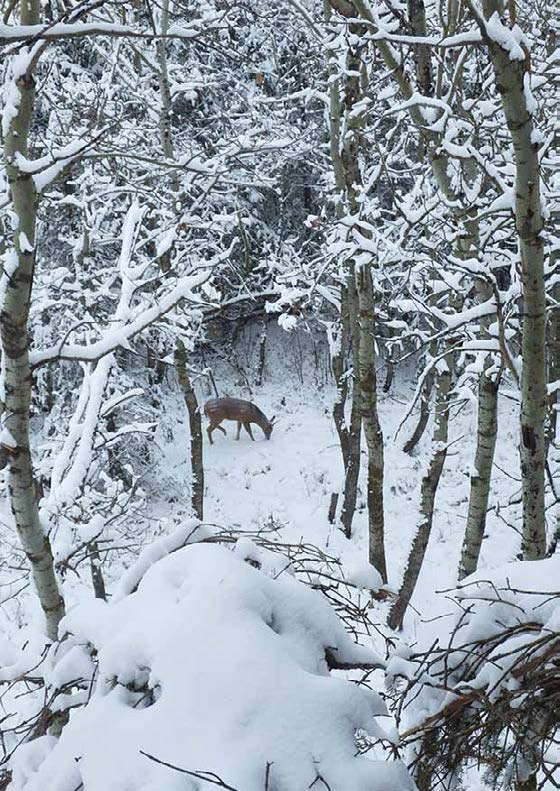
Equipment
The difference between bowhunting and enjoying a nice winter day in the field is that you have to be prepared to quickly shoot an animal. Bowhunters release arrows with either a mechanical release or a leather glove. Both methods are hindered when wearing big bulky warm winter mitts or if the equipment is badly maintained. You need to keep your fingers and hands warm, yet able to be easily freed before the shot presents itself.
Personally, I use fingerless, tipped gloves with a hinged cap that flips off. I also cut a hole through the base of the palm to slip the release hook through, allowing my hands and fingers to stay warm and still allow the release to hold the string. If using a release, make sure it is well-greased with a lubricant engineered for very cold temperatures to prevent the action from sticking or locking up. It’s also just as important to wear warm mitts for the hand gripping the bow when the gear is made of metal. When possible, I keep my hands in my pockets, in addition to wearing my modified gloves, until I see an animal coming into range.
Besides keeping your hands warm, constantly checking your bow and arrows for snow and ice build-up is crucial, especially if flurries are in the air. Snow build-up on your equipment can drastically affect your bow mechanics, arrow flight and the noise created when drawing your bow.

Clothing
Whether you’re sitting most of the day or still hunting slowly through your favorite patch of bush on blustery cold days, it’s more important than ever to dress in layers. Each essential layer has a function: a base layer (against your skin) manages moisture (sweat). Next, the insulation layer keeps the cold outside air away from your skin. Finally, the shell (outer) layer shields you from wind, rain, and snow.
Base layer materials like polypropylene and silks are very good at wicking sweat away from the skin. The best insulation layers are made from 100% merino wool, like Icebreaker, because the fabric is breathable, quiet, and comfortable. As a bonus, wool retains its insulation rating even when wet or damp.
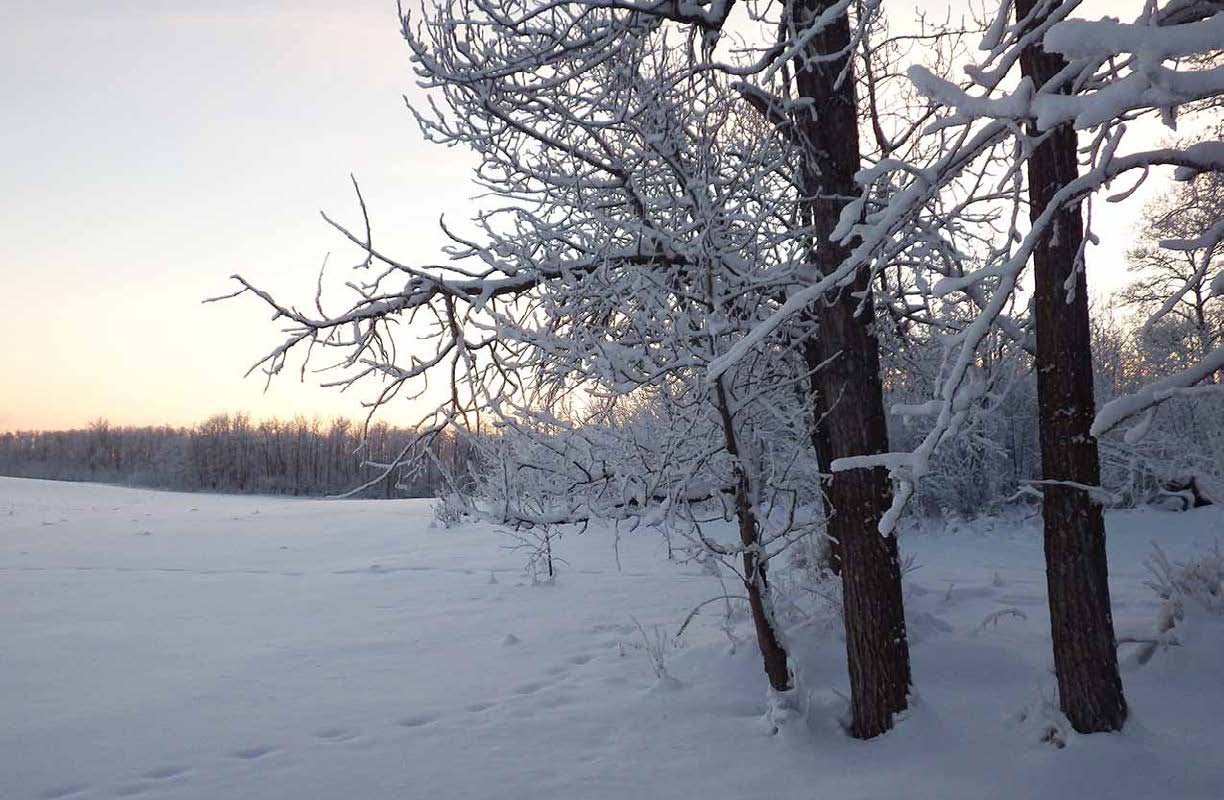
For the shell layer, remember there are few leaves on the trees now, so you’ll most likely produce a dark silhouette outline against the snow-filled forest if you wear your all-season gear. Switching to either a winter camouflage pattern or wearing an old cut-up white T-shirt will break up your outline when worn over the top of your shell layer, helping to conceal yourself. There are lots of high-tech garments (including merino wool) these days to keep you really warm, so avoid buying bulky layers that will interfere with your draw motion and bowstring. They are notorious for catching anything in their path.
A balaclava is a great idea to cover your face and prevent frostbite on exposed skin. Be sure to remember your anchor points, although it is easy to mess up a shot because you can’t feel the string on your nose or pressed against your cheek. The last thing you want to be doing at full draw is fidgeting to find your anchor point(s).
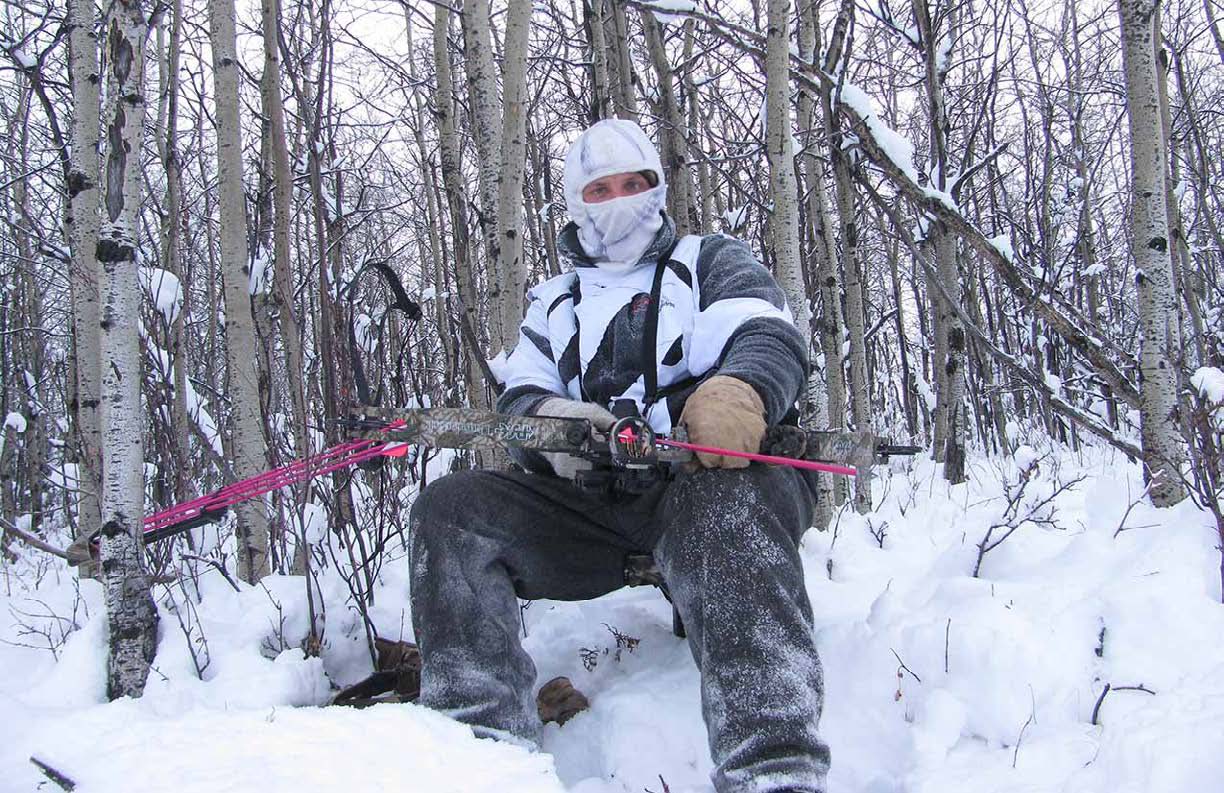
Your feet are the closest to the ground (and snow), so warm winter pac boots are a must to keep your feet warm and dry. Layering applies to these extremities, as well. Using bama socks (thin slippers) really helps keep the heat in. If you plan on sitting for the day, your feet will have less blood flow to them, so take extra precautions to keep them warm. Switching socks keeps your feet dry and controls dampness.
Whatever you prefer to wear, practice in all the clothes you’ll be wearing, especially the facemasks and gloves. These essential extra layers can easily alter both your form and your shots from earlier in the season, when it was warmer. Practice realistic shooting scenarios as much as possible.
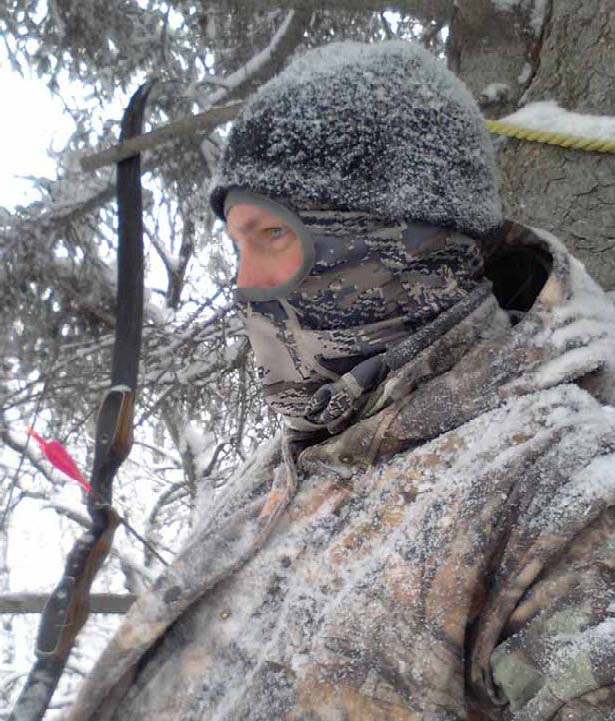
Staying Warm
Layering your clothing allows you the flexibility to add or replace layers as necessary to stay warm and dry. Keeping warm afield is first accomplished by proper clothing and layering (discussed above) and then with other tactics, such as using the sun, eating hot food, keeping active and using air-activated warmers.
If you’re lucky enough to be bowhunting on a crisp, clear winter day, use the sun’s heat wherever possible. Stand still in it; choose a sunny tree-stand location; or still hunt through sunny south-exposed bedding areas. Game animals will also try to use the sun, so hunting in these areas only increases your chances of success. If you’re into still hunting bedding areas, look for southern slopes or areas facing south. These areas warm up sooner than others do, and that’s where you’ll find the game staying warm.
A warm snack or lunch can do wonders for keeping your core warm and fueling your metabolic rate. I prefer to eat stew rather than drink coffee or hot chocolate from an insulated thermos for my mid-day lunch. I find the complete meal keeps me warmer longer, and I won’t have to urinate as much, thus reducing scent. Hank Shaw has many great cookbooks with venison stew recipes. I highly recommend them.
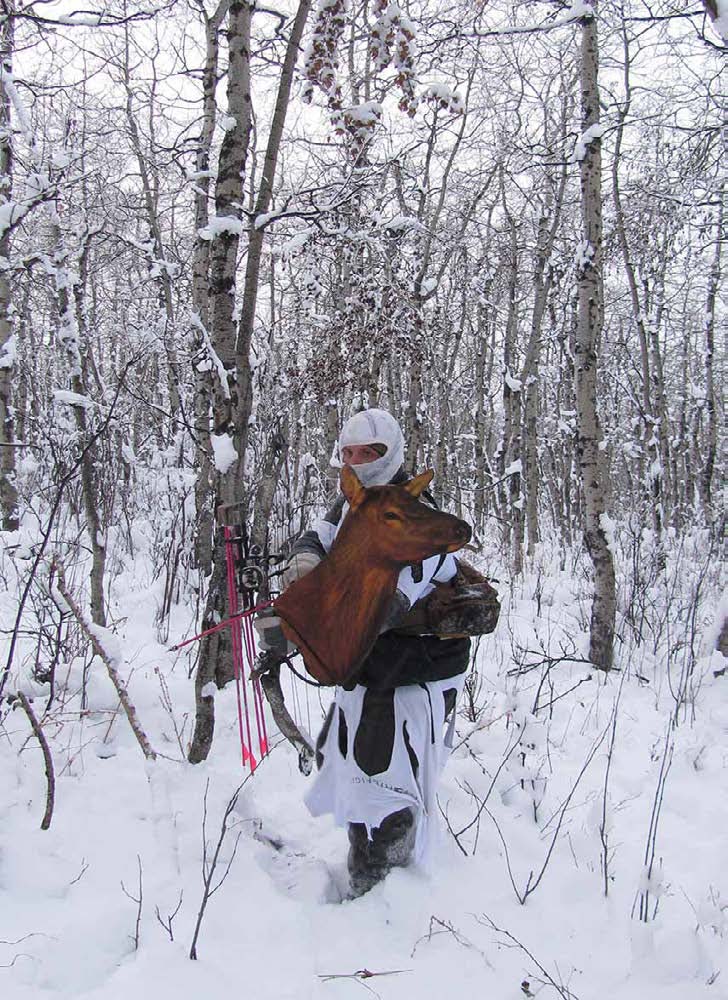
Draw Your Bow
When sitting, draw your bow once or twice an hour. You will not believe much harder it gets to do that as the day goes on and your muscles and body cool. Doing this helps keep your muscles warm and ensures your bow is still in good working order. Just be sure to have a good look around for any game nearby before moving. You should also consider reducing the poundage on your bow for late-season colder hunting. If I get too cold sitting in one position for a while, I’ll go for a walk. I know I shouldn’t, because a shooting opportunity could evolve any second, but sometimes you just have to warm up in order to hunt longer.
When it’s overcast or you’re hunting the north side of hills not exposed to sunlight, use heat packets commonly known as “hot shots.” These small cloth bags of iron produce heat from exothermic oxidation when exposed to air and typically emit heat for half a day. Because it can be tricky to walk when using them in your boots, I always open several packets at the truck and fill my pockets before trekking into the bush. After arriving at my post, I put either one or two in each boot to keep my feet warm throughout the day.
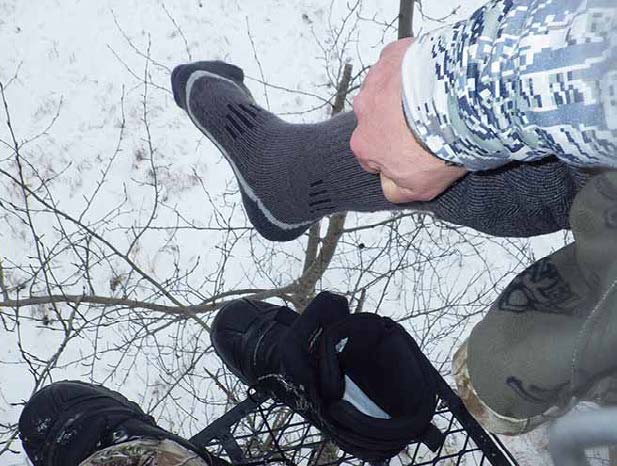
Strategy
Game animals tend to herd up in the winter, so if and when you find them, there are apt to be a lot of them, which isn’t always a good thing. The more eyes, ears and noses around you, the better the chance of being busted, so move cautiously.
Cold-weather bowhunts usually take place after or during rifle seasons in most Wildlife Management Units. Since the animals have already been pressured for nearly three months, they will be particularly wary and nervous at this time. The three things the savvy hunter needs to do for cold-weather bowhunting success are: find a food source, properly conceal themselves to ambush incoming game, and wait them out.
In late season, animals eat lots of food to maintain their body heat to survive winter. Bucks, bulls, yearlings, and pregnant females will be trying to put on some fat before the hardest part of winter hits. Find a good food source and you’ll see game. Next, find the trails leading into these food sources and you should get a shooting opportunity soon enough. Target thick cover close to food sources and set up between the food and the bedding area where the game browse before traveling on to better food. What you’re looking for is a place where a well-traveled trail widens out and scatters for a bit, probably in some cover, then it narrows down and continues to the main feeding area.
Don’t get too close to the bedding area. It’s difficult to be quiet in the winter, especially if temperatures have been below freezing for a few days. Remember that every little sound will travel further and be identified as out of place quickly at this time of year. Remove any snow in the path of your feet when you set up, as it can freeze over and squeak later on if you have to move slightly. Once you have a spot picked out, it’s just a matter of putting in time—at the right time.
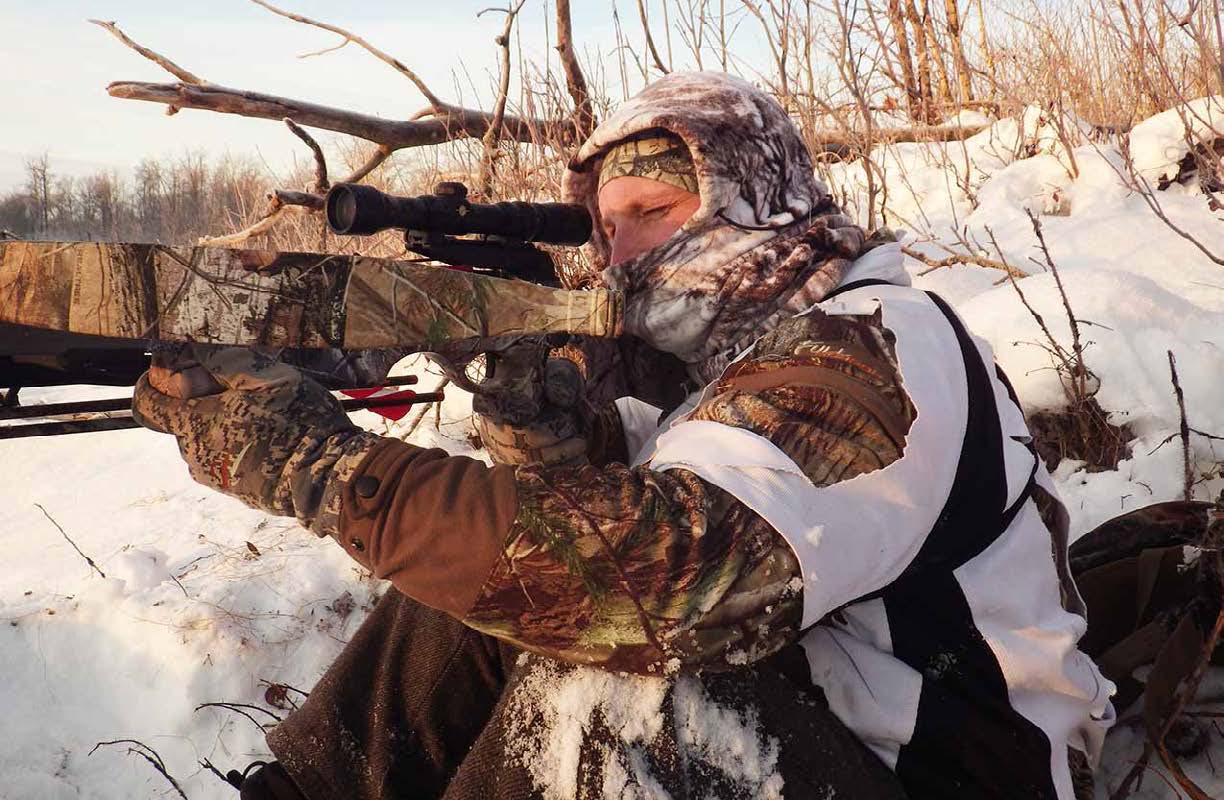
Differing Movement
In cold weather, game will move in the early evening hours and the first couple of hours after sunset. Then, they will be in their bedding areas for the night and will be pretty well safe. Afternoon can be a great time to hunt on cold days. I’ve bowhunted frozen mornings and been in my tree stand before first light. However, many times, these hunts were wasted because I was so cold I had to get down from the stand before mid-morning to warm up. Hunting in the afternoons also guarantees that the sun is at its highest point in the sky and that is usually when the daily temperature hits its high.
Hunting with a partner is very effective, and where legal, lightly pushing bush can result in quality shooting opportunities for bowhunters. This is also an excellent method to alternate sitting and walking for small periods of time. Target daytime bedding areas and have your partner walk through slowly. You don’t want the game to flee out of there at a full speed. It’s best if it just gets up and slowly wanders toward your post on a well-known trail. So, be sure to pick an escape route.
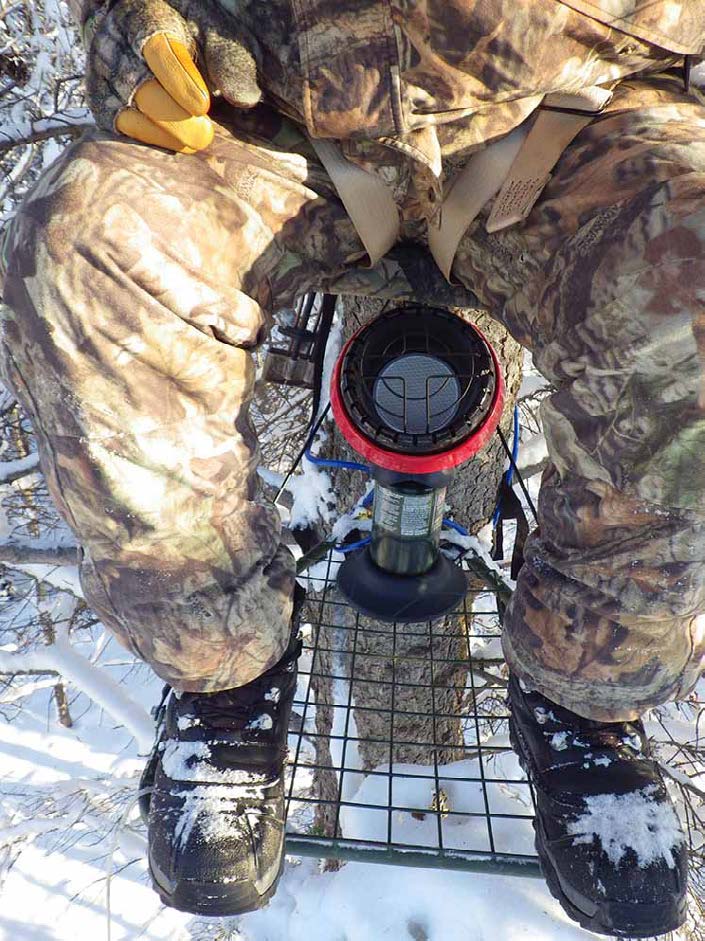
Getting Into Position
My favorite method of hunting in cold weather is to sit still, especially if you’re hunting a rut of any species. I’ve found the game can’t bed all day long either, so they tend to get up and move as well.
During the rut of any species, hunting all day can be productive. You just never know what’s going to show up. Setting up on well-known travel routes near food sources has always produced the best opportunities for me over the years. One of the best tactics to find game is to listen. Cold weather tends to carry the sounds of twigs and branches breaking for a far distance. These sounds can give away the general location of animals. Once you have a bearing on them, simply take your time moving in slowly and keep a lookout. Animals will tend to feed most of the day when it’s extremely cold out, taking short breaks to lay down, but usually right nearby the food source.
Don’t walk long distances. Walking in deep snow or hiking with your heavy pac boots on is hard work and will cause you to sweat quickly. This is the last thing you want to do to keep warm, dry, and hunting all day. Choose a nearby location and dress minimally until you’ve arrived at your hunting spot and have allowed your body to cool down a little. Now is the time to change your socks if they’re wet from sweat and put on your additional layers. Before I settle into position, I knock an arrow and draw my bow to ensure everything is working correctly. I then begin hunting.
Bowhunting, when the mercury dips down deep, can be quite comfortable if you’re prepared. Ensuring your equipment is working and free of snow and ice build-up is critical for making the shot. Hunting and traveling smart, with proper clothing, food and a safe, smart plan will make for an enjoyable day in the field with an excellent chance to harvest an animal. One of the great things about hunting with snow on the ground is that the blood trails are easiest to follow, so it shouldn’t take long to follow up on your shot. Shoot straight and stay warm!
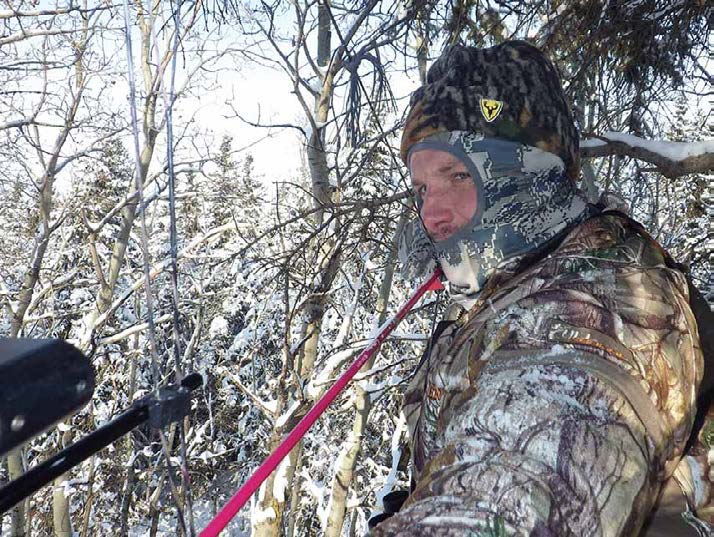
Top Tactics for Cold-Weather Bowhunting
Don’t let extremely cold weather stop you from bowhunting and punching your tag during the last few weeks of the season. Follow these essential tips and you’ll be prepared for success.
- Dress in layers with high-tech clothing to reduce bulkiness
- Perfect a system for drawing your bow while using winter hand and face protection
- Don’t overexert yourself or sweat too much just by walking into position
- Hunt in between sunny bedding areas and rich food sources
- Sit tight and be still
- Eat a hearty hot stew for lunch
- Test and maintain your gear in cold-weather conditions
- Check for snow and ice build-up on your equipment when flurries fall
- Use “hot shot” warmers as an external heat source to keep your extremities warm
Taking these extra precautions will ensure you’re prepared for success if and when that trophy animal comes wandering by.
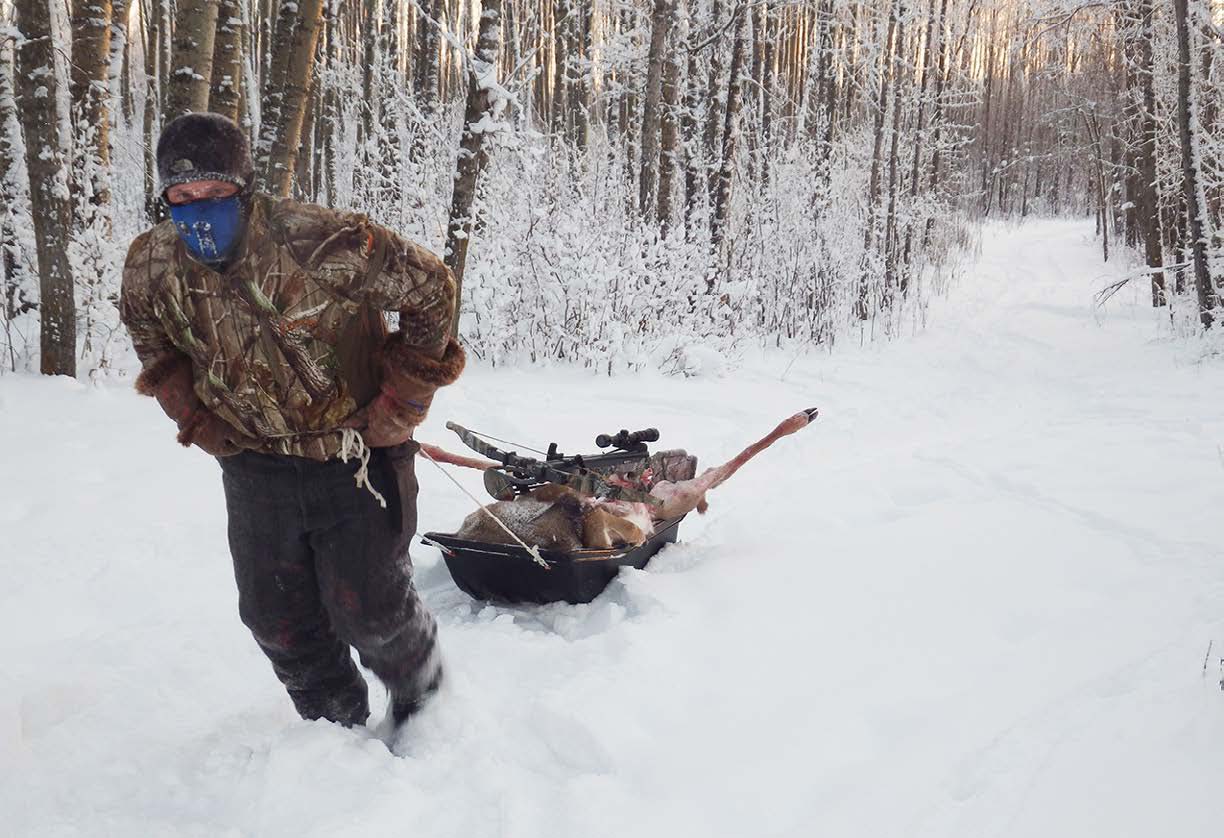
Per our affiliate disclosure, we may earn revenue from the products available on this page. To learn more about how we test gear, click here.





